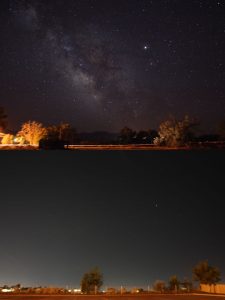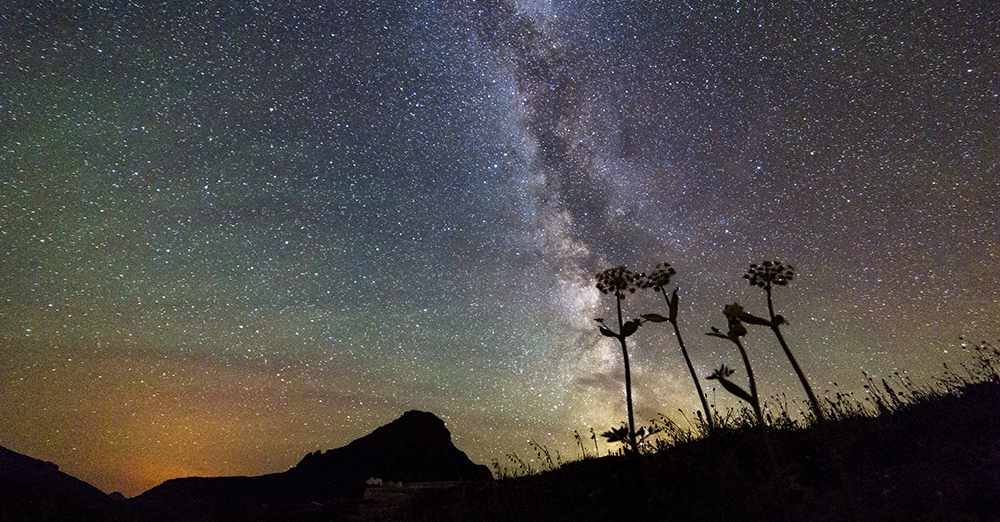
If you wish to become well-informed about light pollution and the dark skies initiative, this article by Ethan Siegel is an excellent place to start. Dr. Siegel is a well known “science writer, astrophysicist, science communicator & NASA columnist.” . . .
For most of us here on planet Earth, navigating the world at night is just a little more challenging than during daytime. Without the Sun’s bright light to illuminate our world, our eyes do their best to adapt. Our color-sensing cones move back in our eyes while the monochrome-sensitive rods move forward. Our pupils dilate to larger diameters, letting more light in. Even in the wild, the Moon and stars provide enough light for a sufficiently dark-adapted eye to make out shapes and objects.
Evolutionarily, this was a spectacularly useful adaptation. Human vision may be optimally suited to daytime vision, but the ways our eyes adjust also allow us to perceive the Universe far beyond our world. Unfortunately, our connection with the night sky has been severed by a truly human endeavor: artificial lighting. While the benefits to public safety and commerce are inarguable, the tradeoff is unnecessary. Light pollution may a worse problem than ever, but it doesn’t have to be this way.
From a truly dark site — on a moonless night where there’s less artificial light generated on Earth than is incoming from the night sky — thousands of stars, multiple planets, the plane of the Milky Way galaxy, and up to four other galaxies beyond our own can be seen. Yet dark sites are becoming harder and harder to find, as the rise in artificial lighting has followed humanity wherever our species has settled. 80% of the entire world, including 99% of Europe and the United States, lives under light-polluted skies, where the Milky Way is never visible even under ideal weather conditions.

